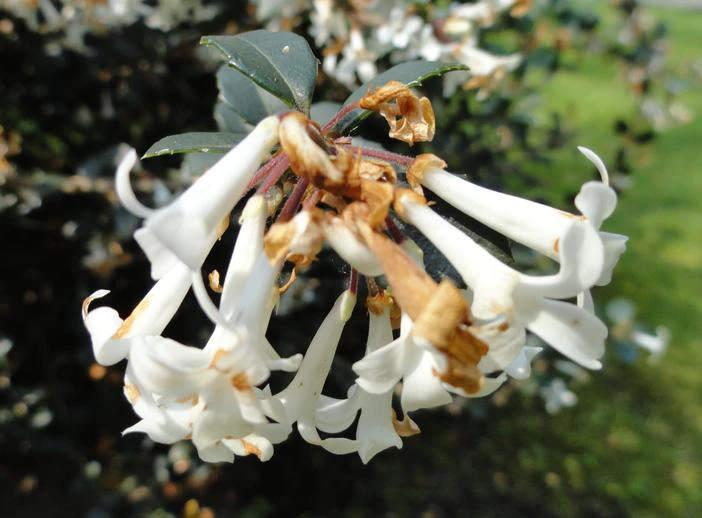Delavay Tea Olive
(Osmanthus delavayi)
Delavay Tea Olive (Osmanthus delavayi)
/
/

Daderot
Public domain
Image By:
Daderot
Recorded By:
Copyright:
Public domain
Copyright Notice:
Photo by: Daderot | License Type: Public domain | License URL: https://creativecommons.org/public-domain/ | Uploader: Daderot | Publisher: Wikipedia Commons





















Estimated Native Range
Climate Requirements for Granite City, Illinois
| This Plant | Your Site | Plant Suitability for Your Location | ||
|---|---|---|---|---|
| • Precipitation | 24" - 59" | 38" | Aquatic | Aquatic |
| • High Temp. | 64°F - 89°F | 90°F | Your summers may be too hot for this plant. | Too hot |
| • Low Temp. | -12°F - 43°F | 20°F | Your winter temperatures are normal for this plant | Excellent |
This plant may not grow well at your location - your precipitation is too high.
Summary
Osmanthus delavayi, commonly known as Delavay Tea Olive, is an evergreen shrub native to the mountainous regions of southern China, particularly in Yunnan province. It typically grows between 4 and 13 feet tall and wide, with a dense, rounded form. The Delavay Tea Olive thrives in the understory of forests and on mountain slopes, where it is part of a rich biodiversity. The plant is adorned with small, glossy, dark green leaves and in late winter to spring, it produces clusters of tiny, tubular, fragrant white flowers that are highly attractive to pollinators.
Delavay Tea Olive is valued for its sweetly scented blooms and attractive evergreen foliage, making it a favored choice for sensory gardens, hedges, and as a specimen plant in residential landscapes. It has received the Royal Horticultural Society’s Award of Garden Merit, indicating its exceptional qualities for garden use. This shrub prefers well-drained soil, moderate watering, and can tolerate full sun to part shade conditions. While generally low-maintenance, it may require pruning to maintain a desired shape and size. It is hardy in USDA zones 7-9. Potential problems include scale insects and root rot in poorly drained soils.CC BY-SA 4.0
Delavay Tea Olive is valued for its sweetly scented blooms and attractive evergreen foliage, making it a favored choice for sensory gardens, hedges, and as a specimen plant in residential landscapes. It has received the Royal Horticultural Society’s Award of Garden Merit, indicating its exceptional qualities for garden use. This shrub prefers well-drained soil, moderate watering, and can tolerate full sun to part shade conditions. While generally low-maintenance, it may require pruning to maintain a desired shape and size. It is hardy in USDA zones 7-9. Potential problems include scale insects and root rot in poorly drained soils.CC BY-SA 4.0
Plant Description
- Plant Type: Shrub
- Height: 6-12 feet
- Width: 4-12 feet
- Growth Rate: Moderate, Slow
- Flower Color: White
- Flowering Season: Spring, Summer
- Leaf Retention: Evergreen
Growth Requirements
- Sun: Full Sun, Part Shade
- Water: Low, Medium
- Drainage: Medium
Common Uses
Bee Garden, Fragrant, Hedges, Low Maintenance, Showy Flowers, Street Planting
Natural Habitat
Mountainous regions of southern China, particularly in Yunnan province, in the understory of forests and on mountain slopes
Other Names
Common Names: Delavay's Tea Olive , Delavay’s Osmanthus
Scientific Names: Osmanthus delavayi , Ligustrum phillyrea , Siphonosmanthus delavayi
GBIF Accepted Name: Osmanthus delavayi